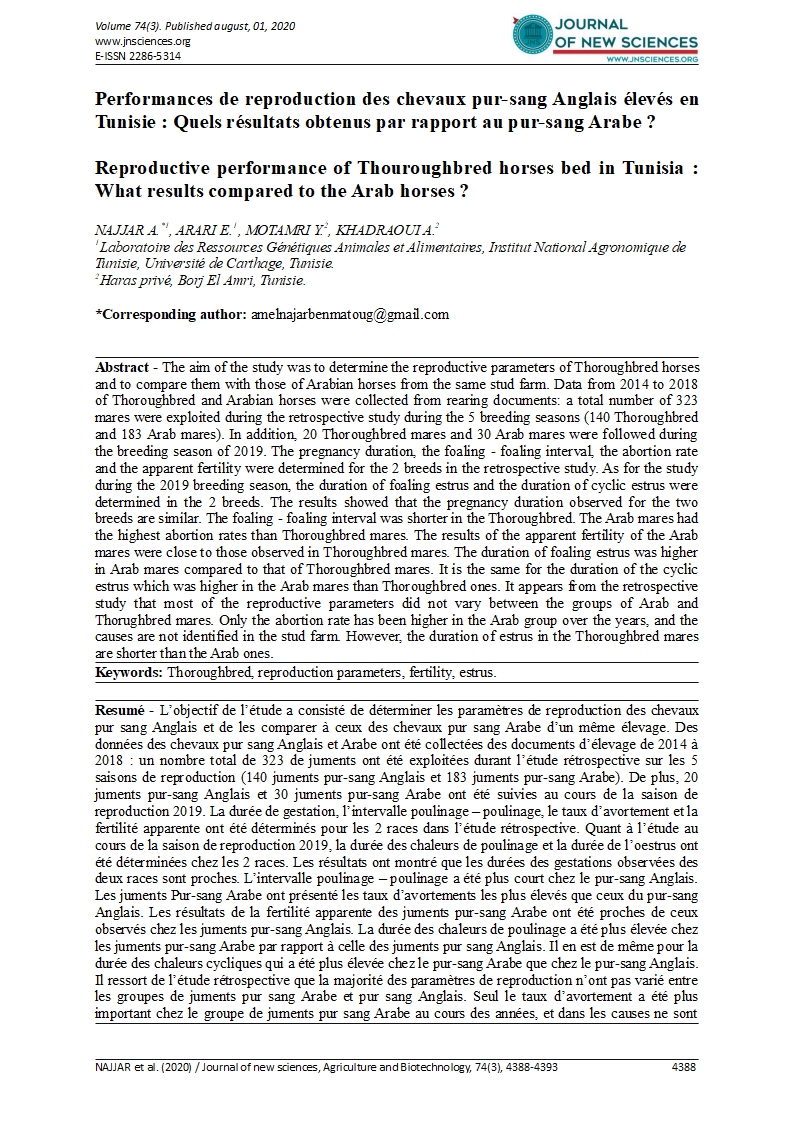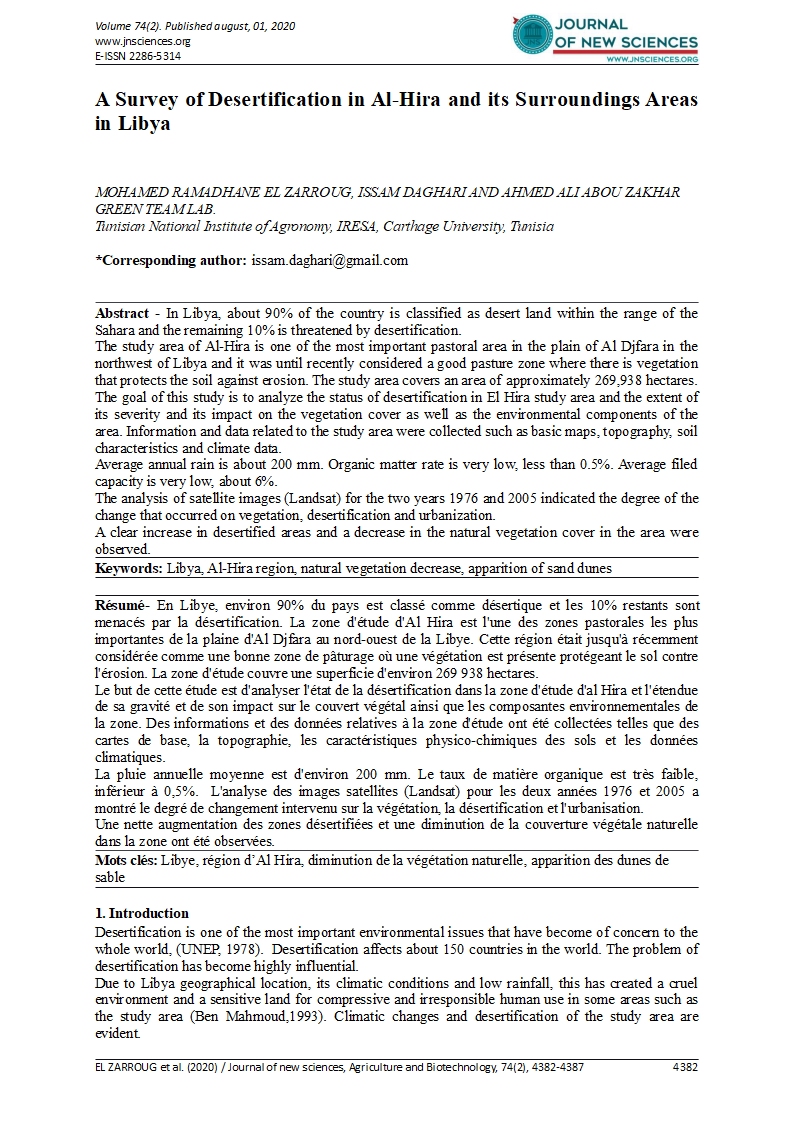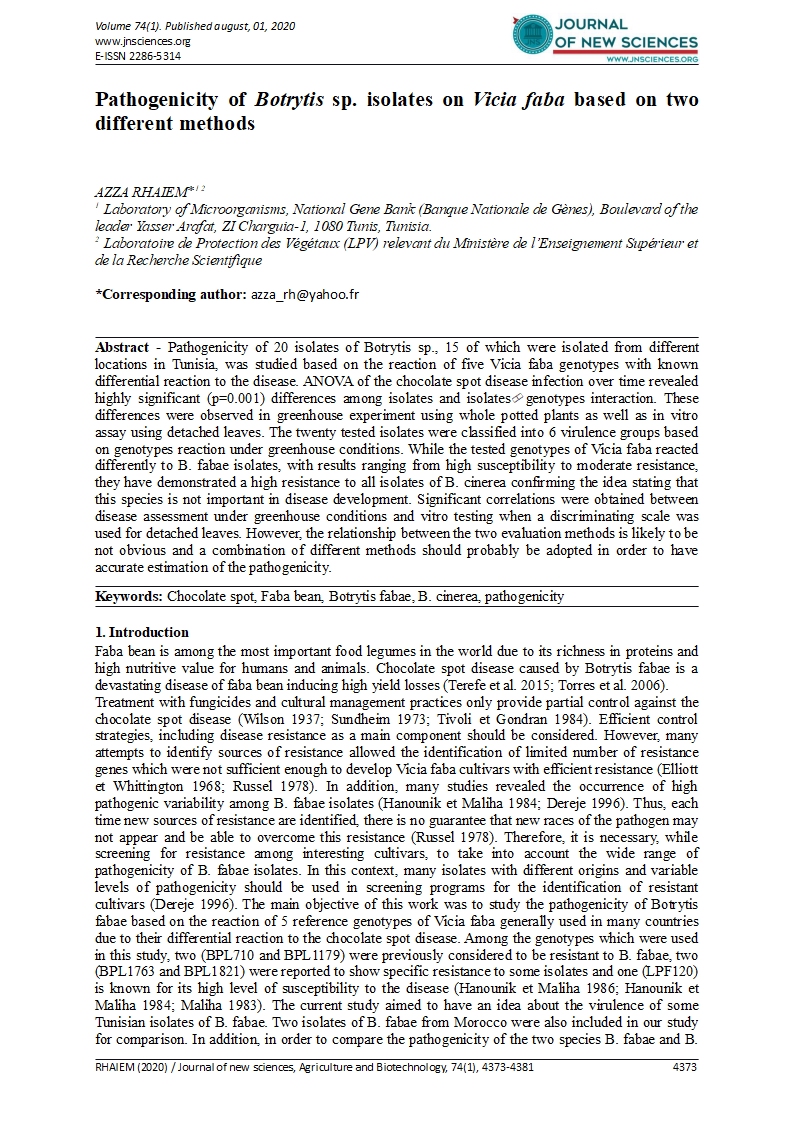- Category: Volume 74
- Hits: 3021
Reproductive performance of Thouroughbred horses bed in Tunisia : What results compared to the Arab horses ?

Performances de reproduction des chevaux pur-sang Anglais élevés en Tunisie : Quels résultats obtenus par rapport au pur-sang Arabe ?
NAJJAR A.1
ARARI E.1
MOTAMRI Y.2
KHADRAOUI A.2
1Laboratoire des Ressources Génétiques Animales et Alimentaires, Institut National Agronomique de Tunisie, Université de Carthage, Tunisie.
2Haras privé, Borj El Amri, Tunisie.
Abstract - The aim of the study was to determine the reproductive parameters of Thoroughbred horses and to compare them with those of Arabian horses from the same stud farm. Data from 2014 to 2018 of Thoroughbred and Arabian horses were collected from rearing documents: a total number of 323 mares were exploited during the retrospective study during the 5 breeding seasons (140 Thoroughbred and 183 Arab mares). In addition, 20 Thoroughbred mares and 30 Arab mares were followed during the breeding season of 2019. The pregnancy duration, the foaling - foaling interval, the abortion rate and the apparent fertility were determined for the 2 breeds in the retrospective study. As for the study during the 2019 breeding season, the duration of foaling estrus and the duration of cyclic estrus were determined in the 2 breeds. The results showed that the pregnancy duration observed for the two breeds are similar. The foaling - foaling interval was shorter in the Thoroughbred. The Arab mares had the highest abortion rates than Thoroughbred mares. The results of the apparent fertility of the Arab mares were close to those observed in Thoroughbred mares. The duration of foaling estrus was higher in Arab mares compared to that of Thoroughbred mares. It is the same for the duration of the cyclic estrus which was higher in the Arab mares than Thoroughbred ones. It appears from the retrospective study that most of the reproductive parameters did not vary between the groups of Arab and Thorughbred mares. Only the abortion rate has been higher in the Arab group over the years, and the causes are not identified in the stud farm. However, the duration of estrus in the Thoroughbred mares are shorter than the Arab ones.
Keywords: Thoroughbred, reproduction parameters, fertility, estrus.


